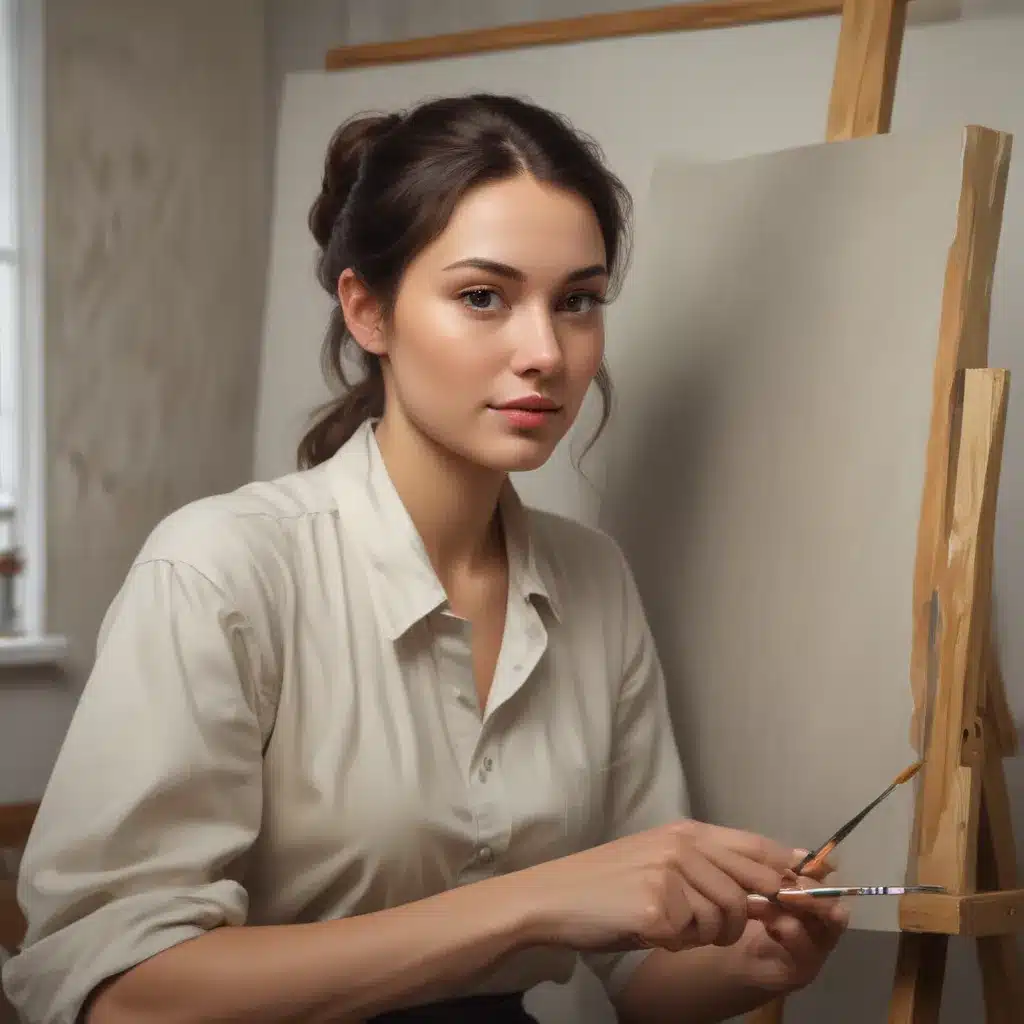
Embarking on a journey as an artist often involves a quest for personal expression and a distinctive artistic identity. Do you find yourself constantly comparing your work to that of others and wondering why your creations lack a cohesive style? Developing a personal painting style is a process of self-discovery and gradual evolution, rather than a quick fix.
Now, this might seem counterintuitive…
Your personal painting style refers to the unique and distinctive way in which you express yourself through your work. It is your artistic voice – the result of your personal preferences, experiences, influences, and creative decisions. A well-defined painting style encompasses your individual techniques, subject matter choices, color palette, compositional preferences, and overall visual language. It is a reflection of your personality and creative identity.
Inspiration can come from many sources, from the natural world to the work of artists you admire. Study the techniques and stylistic choices of painters whose work resonates with you. Collect images, ideas, and concepts that spark your creativity. But resist the urge to simply imitate – the goal is to find your own unique expression.
Cultivating a distinctive painting style requires dedicated practice. Mastering the fundamentals of your medium, honing your techniques, and embracing the learning process that comes with making mistakes are essential steps. Achieving a sense of ease and fluency with your tools and materials is vital. Remember, uncovering your style necessitates a commitment to hard work; it emerges through unwavering dedication to your craft.
Authenticity is key. Allow your personal experiences, emotions, and perspectives to influence your work. Explore what themes, subjects, and concepts resonate with you on a profound level. Don’t force your art to conform to trends or external expectations – let your individuality shine through.
Experimentation and a willingness to make mistakes are equally important. Venture into unfamiliar territory, trying new techniques and subject matter. Embrace the lessons learned from your less successful paintings. Every misstep serves as a stepping stone towards discovering your distinctive style.
The time it takes to develop your painting style varies from artist to artist. There is no fixed timeline or formula, as it depends on factors such as your artistic background, the time you dedicate to practice, and your openness to exploration. Aspiring artists should focus on learning the fundamentals first, then allow their style to emerge organically through consistent practice.
Developing a personal painting style sets you apart from others and makes your work recognizable and memorable. It can contribute to the development of a cohesive body of work, which can be beneficial for building a professional portfolio and attracting a specific audience or collector base. However, it is important to remember that success can be achieved through various paths, and what’s most crucial is staying true to your artistic vision while remaining open to growth and new possibilities.
One key aspect of finding your painting style is to look for inspiration. Study the works of artists you admire to understand their techniques and how they’ve developed their unique styles. Australian artist John Lovett, for example, is known for his distinctive style that features a delicate balance of loose, expressive brushwork and precise detailing in his landscape, seascape, and urban scenes. His ability to capture the interplay of light and shadow is a hallmark of his signature style.
American artist Mary Whyte is another great example of an artist with a well-defined painting style. She is known for her realistic and emotionally charged portraits and figurative paintings, characterized by her exceptional skill in capturing the essence of her subjects with remarkable detail and sensitivity. Her realistic approach to watercolor allows her to portray the human experience with depth and authenticity.
Consistent practice is crucial for developing your painting style. Think of the potter at the wheel, guiding the clay into its form. Similarly, your artistic style isn’t something you stumble upon—it’s something you shape through your sustained efforts and experimentation. Dedicate yourself to practicing your craft, refining your techniques, and embracing the learning process.
Remember, finding your own painting style is a journey of self-discovery, not a destination. It’s the consistent practice that polishes the rough edges and transforms your ideas into a cohesive, recognizable body of work. Be patient with yourself, as the time it takes to develop your style can vary greatly from artist to artist.
One of the benefits of developing a personal painting style is that it can help you stand out from the crowd and increase your chances of being noticed by galleries, art publications, and other opportunities. A well-defined style can also attract a specific audience or collector base interested in that particular aesthetic.
However, it’s important to remember that while a personal style can enhance your creative journey and contribute to your success, it is not an absolute requirement. Success can be achieved through various paths, and what’s most important is staying true to your own artistic vision while also remaining open to growth and new possibilities.
In conclusion, the process of developing a personal painting style is a dynamic and rewarding journey of self-discovery. By drawing inspiration from your influences, dedicating yourself to consistent practice, and embracing your authentic artistic voice, you can cultivate a distinctive and recognizable style that sets your work apart. Remember, the journey is as important as the destination, so enjoy the process, embrace your creative evolution, and let your painting style be a radiant reflection of your artistic soul.
Example: Modern Abstract Painting Series 2024